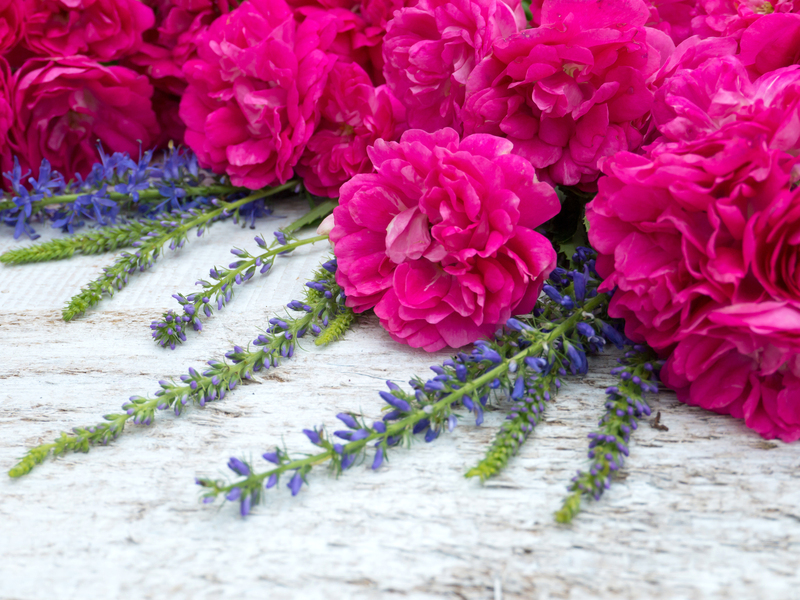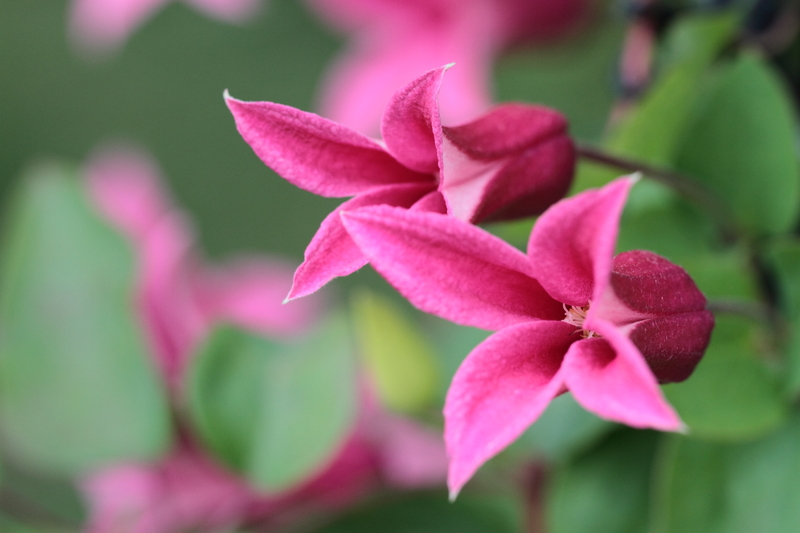Creating a Garden Retreat for Dog-Loving Households
Posted on 01/10/2025
Creating a Garden Retreat for Dog-Loving Households
For many dog owners, the backyard is more than just a patch of grass -- it's an extension of home, play, and relaxation. Designing a garden retreat that's both a paradise for you and your four-legged companions requires thoughtful planning and creativity. In this guide, we'll explore essential steps, clever ideas, and pet-safe details that will help you transform your outdoor space into a haven where both dogs and humans can relax, explore, and thrive together.
Why Create a Dog-Friendly Garden Retreat?
- Quality Time: A pet-friendly garden provides a dedicated space for bonding, training, and play.
- Well-being: Access to a safe and stimulating environment promotes your dog's physical and mental health.
- Beauty Meets Function: With careful planning, you can create a space that's attractive, relaxing, and dog-safe.

Key Considerations for a Dog Household Garden
Before you start digging and planting, it's important to understand your dog's habits and needs. Consider their breed, energy level, digging and chewing tendencies, and any allergies or sensitivities. With these in mind, you can begin crafting a retreat that works for everyone.
Assess Your Outdoor Space
- Size and Layout: How much space can you dedicate to your canine companion? Consider dividing the area into zones for play, relaxation, and gardening.
- Sun and Shade: Observe how sunlight moves through your garden. Dogs need both sunbathing spots and cool, shaded areas for comfort throughout the day.
- Safety First: Identify hazards such as toxic plants, sharp tools, harmful chemicals, or escape routes. Secure boundaries are crucial.
Pet-Safe Garden Design Principles
When designing a dog retreat garden, focus on:
- Enclosed Spaces: Use secure fencing to prevent escapes. Consider your dog's size and jumping or digging abilities.
- Non-Toxic Materials: Only use pet-safe paints, mulches, and hardscape materials. Avoid cocoa mulch, which can be toxic to dogs.
- Durable Pathways: Paths should be sturdy and non-slip -- natural flagstone, brick, or pea gravel are excellent choices for prancing paws.
- Gentle Planting: Select non-toxic, robust plants that can withstand a little roughhousing. Avoid thorns and spines.
Dog Garden Ideas: Zones for Play, Rest, and Discovery
Your garden retreat should offer everything your dog loves -- wide-open space, new smells, places to rest, and interesting textures to explore. Here's how you can incorporate these into your garden design:
1. Play Zones
- Open Lawns: Maintain an area of lawn for games of fetch, running, or tug-of-war. Cool-season grasses such as fescue or rye are more resistant to wear and dog urine.
- Agility Features: Integrate low jumps, tunnels, or balance beams to stimulate your dog's mind and body.
- Obstacle Courses: Create simple challenges with logs, tires, or stumps for curious pups to navigate.
2. Digging & Exploration Areas
- Designated Dig Pit: Encourage digging in a specific spot by filling a sandbox or a designated bed with soft soil or sand. Hide toys or treats to make it enticing!
- Scent Trails: Plant fragrant herbs like rosemary, thyme, or basil along paths for sniffing adventures.
- Wildlife Viewpoints: Create spots for watching birds, butterflies, or squirrels to keep your dog engaged.
3. Shaded Resting Nooks
- Canopy Trees or Pergolas: Large trees or shade structures provide relief from summer heat.
- Cozy Shelters: Small gazebos or covered dog houses offer protection from rain or intense sun.
- Cool Surfaces: Flat stones or wooden decks stay cooler on little paws than concrete or artificial turf.
Choosing Dog-Safe Plants for Your Garden Retreat
The heart of a beautiful and safe garden retreat lies in selecting the right plants. Many common garden plants can be toxic to dogs, so planning is key.
Non-Toxic Plant Suggestions
- Herbs: Basil, cilantro, sage, thyme, parsley, rosemary
- Flowers: Sunflowers, marigolds, snapdragons, zinnias, violets
- Shrubs: Camellia, bottlebrush, magnolia, crepe myrtle
- Groundcovers: Elfin thyme, Irish moss, white clover, creeping Jenny, blue star creeper
Tip: Always double-check plant species against a reputable toxic plant list, such as from the ASPCA, before adding them to your dog backyard retreat.
Plants and Materials to Avoid
Keep your garden retreat for dogs safe by avoiding these potentially harmful choices:
- Toxic Plants: Oleander, foxglove, azalea, sago palm, lilies, daffodils, tulips, and morning glory
- Sharp or Spiny Plants: Agave, cacti, holly, pyracantha
- Cocoa Mulch: Contains theobromine, which is dangerous for dogs
- Pesticides and Herbicides: Choose only pet-safe options and store all chemicals far out of reach
Hardscaping for Durability and Comfort
Hardscape elements play a crucial role in the design of your garden sanctuary for both you and your furry friend.
Best Surfaces for Dogs
- Pea Gravel: Gentle on paws, improves drainage, deters digging around plants
- Natural Stone: Durable, attractive, and dissipates heat quickly
- Wooden Decking: Sanded and sealed decking is soft on feet and offers natural cooling shade underneath
- Artificial Turf: Look for pet-specific options with antimicrobial features and good drainage
Paths and Movement
- Curved Walkways: Dogs love to patrol boundaries; gentle curves are more interesting and less prone to wear than straight lines
- Low Borders: Prevent trampling of delicate beds with low wood, stone, or metal edging
Comfort Features for a Pet Friendly Garden Escape
Small enhancements can make your dog garden truly special. Make comfort a priority with these additions:
- Fresh Water Station: Install a dog-friendly fountain or automatic waterer for hydration on hot days
- Dog Beds or Outdoor Couches: Durable, washable beds give dogs a designated spot to relax near you
- Outdoor Toy Box: Keep balls, chews, and ropes handy but organized
- Paw Cleaning Station: A hose, gentle sprayer, or shallow rinse basin near the door helps manage muddy paws
Keeping Your Pet Safe in the Garden
Safety is critical in any garden retreat for pet households. Here are ways to keep tails wagging without worry:
- Secure Fencing: Regularly check for gaps or loose boards
- Compost and Trash: Keep compost bins and garbage securely lidded and inaccessible
- Organic Pest Control: Use natural deterrents and beneficial insects instead of chemical sprays
- Shade at All Times: Dogs can overheat quickly; always provide cool resting spots
- Supervision: Especially for young dogs, monitor garden time to prevent mischief and accidents
DIY Projects to Enhance Your Dog-Friendly Garden Retreat
Look for ways to personalize your outdoor space to suit your dog's personality. These fun DIY additions make your garden retreat even more enjoyable:
- Custom Name Signs: Paint or wood-burn your dog's name onto a plaque at their favorite spot
- Dog Pools: A shallow kiddie pool provides cool fun in summer
- Pup Treat Garden: Plant parsley, carrots, or strawberries for tasty, healthy homegrown snacks
- Artisan Paths: Inlay pawprints into stepping stones for a whimsical, personal touch
Maintenance Tips for a Thriving Outdoor Retreat
A dog-friendly garden requires regular care to remain beautiful and safe.
- Clean Up Waste: Daily removal of pet waste keeps the retreat hygienic and prevents odors
- Repair Wear & Tear: Reseed or replant worn lawn patches, mend digging holes promptly
- Inspect for Hazards: Check for sharp objects, fallen branches, or chewable hazards after storms
- Refresh Water: Change water supplies daily to avoid bacteria buildup
- Train and Reward: Encourage dogs to use designated potty and digging areas, reward good outdoor manners

Frequently Asked Questions
What are the best dog-friendly ground covers?
For active dog households, try Irish moss, blue star creeper, elfin thyme, or durable turfgrass varieties like fescue and ryegrass. These can handle paw traffic and are non-toxic.
How do I prevent dogs from damaging my flower beds?
Use low fencing, decorative edging, or dense shrubs to deter trampling. Consider raised garden beds or designate one part of the yard as a digging area to redirect their instincts.
Are there dog-safe mulch options?
Avoid cocoa mulch. Instead, use cedar chips, pine bark, or shredded hardwood, which are non-toxic and help control weeds.
How can I keep pests away naturally?
Encourage beneficial insects like ladybugs and lacewings, plant herbs such as lavender and rosemary as natural deterrents, and use non-chemical controls for stubborn pests.
Conclusion: Your Backyard Dog Retreat Awaits
Creating a garden retreat for dog-loving households is a rewarding project that brings beauty, functionality, and joy to your outdoor space. With the right design, safe plants, and personalized details, your backyard becomes a sanctuary where your dog can play, relax, and grow alongside you. Whether you're redesigning a small courtyard or a sprawling lawn, these tips ensure a harmonious blend of comfort, charm, and canine contentment. Start planning today, and enjoy a garden that truly welcomes every member of your family -- paws included!

